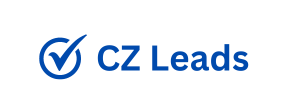Broken links disrupt an otherwise smooth internet experience. They damage a website’s credibility, hinder user navigation, and hamper search engine optimization efforts. A broken link that takes users away from the path they were meant to take could cause them to lose patience and even abandon the website altogether. However, with the right methods and tools, the difficult task of locating and fixing broken links can be streamlined and made more achievable.
We will go over the strategies and tactics needed to identify weak points and fix them effectively in this comprehensive tutorial. Gaining expertise in these areas will help you maintain a polished, navigable, and consistently user-friendly website that will foster trust and reliability among the audience.
Recognizing Broken Links and Their Importance
A hyperlink is considered broken, dead, or a 404 error advertising database if it leads to a website that has moved without the necessary redirection or is no longer available. These broken links usually lead to error pages, which annoys users and damages your website’s reputation. In addition, search engines evaluate broken links negatively, which has a negative effect on your website’s. SEO performance.
Using Link Identification Tools
There are a myriad of tools that can help you discover broken links scattered throughout your website. Google Search Console is a fundamental tool for identifying broken links encountered by Google’s crawlers. It provides insightful information about crawl failures, including broken links and unavailable pages.
Additionally, detecting and repairing broken connections is made easier by third-party tools like Ahrefs, Screaming Frog, and SEMrush, which include robust link analysis features. Webmasters can preemptively repair broken links through the use of these tools, improving user experience and maintaining the site’s search engine rankings.
Tactics for Understanding Broken Links
Manually checking every crevice and hisorohana ny sakafo avy amin’ny poti corner of a site for broken links can be a laborious and time-consuming procedure. Instead, use systematic approaches that effectively uncover broken links:
Crawl your site: Use web crawlers like Xenu’s Link Sleuth or Screaming Frog to thoroughly examine your website. These powerful tools carefully crawl each page, flag any broken links, and produce comprehensive, easy-to-read reports.
Use Online Checkers: Opt for user-friendly online link checkers, which are especially useful for quickly identifying broken links on smaller websites. By entering your website URL, tools like Broken Link Checker and Dead Link Checker allow you to quickly generate reports that identify broken links.
Review Google Search Console: Use the “Crawl Errors” area whenever possible. This helpful tool provides information about pages with 404 errors, helping you identify the exact URLs that need to be fixed immediately.
How to Fix Broken Links Effectively
After identifying broken links, it is imperative to rectify them quickly for a smooth user experience:
Redirect or replace: If there are broken internal links, redirect them to relevant and functional pages. If the content is no longer available, consider creating a custom 404 error page that guides users back to the main site or suggests similar content, ensuring a smooth browsing experience.
Update Links: Dealing with broken external links involves looking for alternative sources or similar content to replace them. Ensure that new links are reputable and relevant to maintain user trust and engagement.
Use 301 Redirects: Use 301 redirects when changing or removing page URLs. By smoothly guiding users and search engines from the outdated. URL to the current URL, these redirects ensure a seamless change that doesn’t cause any issues.
Building a robust maintenance strategy
It takes constant attention to establish aol email list and maintain a strong link structure to prevent future broken links from occurring. Implementing these practices is essential to maintaining a healthy online environment:
Regular Audits: Initiate periodic audits to quickly identify and rectify any potential broken links that may surface. Consistent monitoring ensures that the integrity of your website’s links is maintained over time.
Keep an eye on internal links: Make sure to inspect internal links carefully whenever you make changes to the content or structure of your website. Maintaining their functionality is essential to providing users with a smooth and continuous browsing experience.
Stay Up-to-Date : Vigilantly monitor external links, especially those leading to resources beyond your website. Keep your content reliable and relevant by updating or removing these links regularly. This proactive strategy improves the overall user experience and protects against potential disruptions.
Contact Indeed. SEO for expert assistance
Optimizing website performance and ensuring a seamless user experience requires identifying and fixing. Broken Links . Get in touch with Indeed. SEO if you need further assistance or guidance in fixing broken links and improving your website’s functionality.
Ensuring that there are no broken links on your website improves user experience and provides a solid foundation for search engine optimization .






